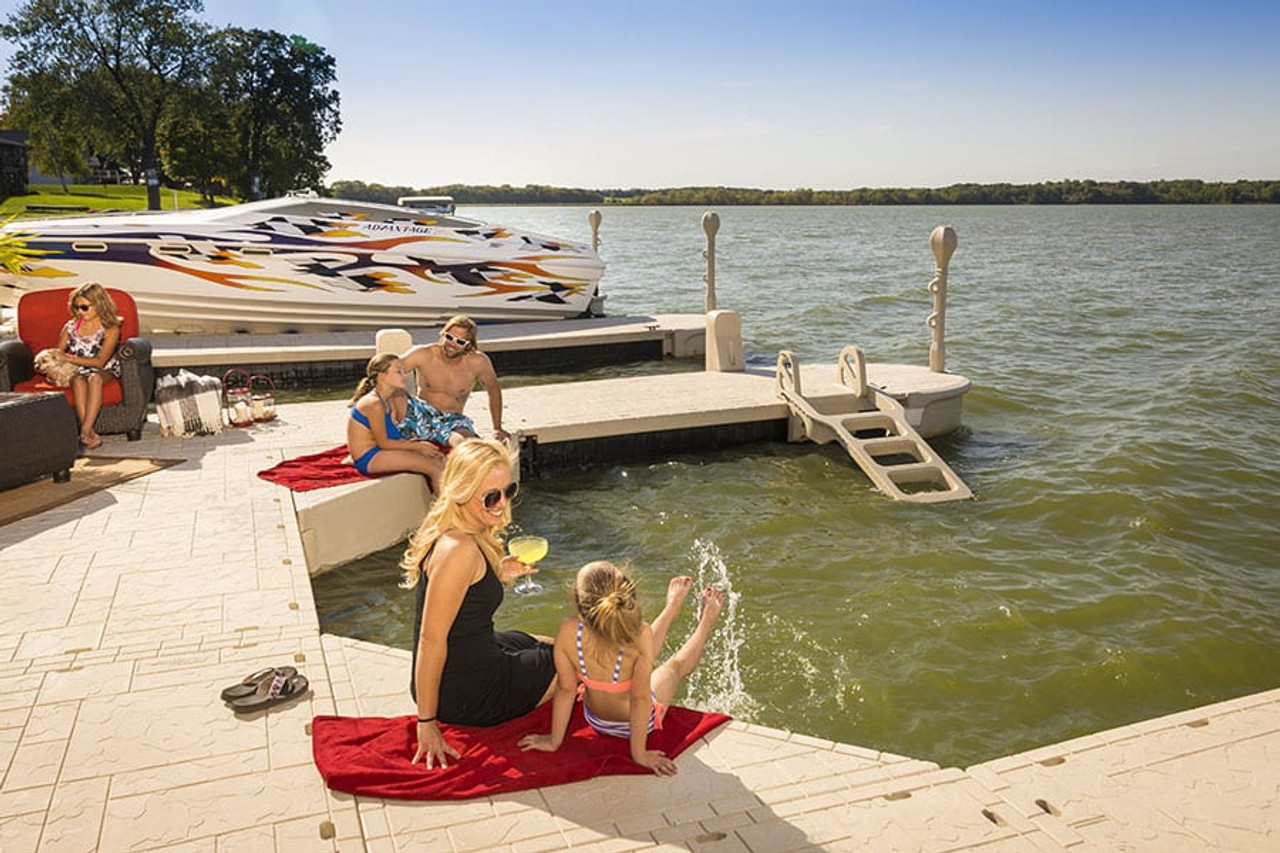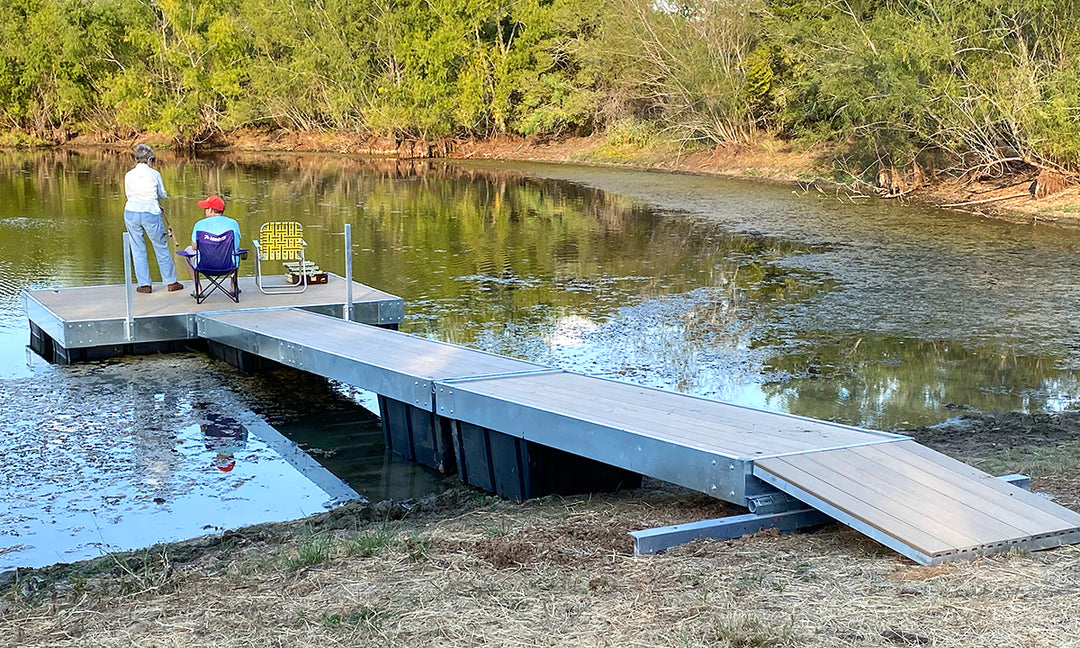How Floating Dock Company Competence Can Raise Your Waterfront Experience
How Floating Dock Company Competence Can Raise Your Waterfront Experience
Blog Article
Develop the Perfect Docking Service With Floating Docks
Floating docks present a flexible remedy for a selection of maritime requirements, adapting perfectly to changing water levels and varied vessel types. Their modular nature permits quick installation and relocation, yet the option of ideal materials and design features is vital for making sure both performance and visual charm. As we explore the vital components that add to the efficiency of floating docks, numerous crucial aspects pertaining to stability and maintenance will emerge, questioning about exactly how to maximize your docking experience. The subsequent conversation will illuminate these important considerations.

Benefits of Floating Docks
Floating docks offer various advantages that make them a perfect option for different maritime applications. One of the main benefits is their adaptability to altering water degrees. Unlike taken care of docks, floating docks surge and fall with the trend, making certain regular accessibility for vessels. This feature is particularly essential in areas prone to significant tidal variations or seasonal water degree adjustments.
Additionally, floating docks are generally simpler and quicker to install contrasted to typical fixed structures. Their modular layout enables for straightforward assembly and disassembly, facilitating upkeep and relocation when required. This flexibility is specifically useful for momentary applications or in environments where problems may change.
Floating docks additionally have a tendency to be a lot more eco-friendly, as they decrease disturbance to the seabed and bordering water environments. Their buoyant nature decreases the risk of damages to marine life, promoting a much healthier environment. These docks can be tailored to accommodate different vessel dimensions, guaranteeing that they fulfill specific operational demands.
Ultimately, the mix of flexibility, ease of setup, and environmental factors to consider makes floating docks a very effective remedy for a wide variety of maritime needs.
Selecting the Right Products
Picking the appropriate materials for floating docks is critical to make sure longevity, sturdiness, and stability. The option of materials directly affects the dock's efficiency in various environmental conditions, including exposure to water, sunlight, and potential wear from marine traffic.
Common materials used for floating docks consist of light weight aluminum, timber, and high-density polyethylene (HDPE) Light weight aluminum is light-weight, corrosion-resistant, and calls for marginal upkeep, making it a superb selection for long life. Its first price can be greater compared to other products.
Timber, while cosmetically enticing and giving a traditional appearance, can be susceptible to rot and pest damages if not correctly treated. Therefore, making use of pressure-treated timber or normally long lasting types like cedar or redwood can reduce these issues.
HDPE is a prominent choice as a result of its resistance to UV rays and chemicals, together with being eco-friendly. floating dock builder. It is light-weight and offered in different shades, enabling customization
Inevitably, the best material selection will rely on particular needs, including spending plan, desired aesthetic appeals, and environmental factors to consider. Cautious assessment of these elements will certainly lead to a effective and resistant floating dock service.
Style Factors To Consider for Stability
When creating floating docks, making sure security is an essential facet that can considerably impact their capability and security. Stability in floating dock style is affected by numerous elements, consisting of buoyancy, weight distribution, and the setup of parts. An optimal buoyancy system ought to use materials that supply enough lift while lessening weight. This balance makes certain that the dock remains above water, even under differing lots.
Weight circulation is essential; evenly dispersing loads across the dock avoids tilting and improves stability. This can be attained with calculated positioning of docking go to this web-site devices, such as cleats and fenders, along with proper spacing of drifts. Additionally, the measurements of the dock need to be attentively planned. Bigger layouts can provide boosted stability, particularly in rough water problems, while longer docks may require added assistances to stop sagging.
Another key factor to consider is the ecological effect, including wave action and wind. Incorporating features such as sidewalls or skirting can assist alleviate the impacts of environmental forces, keeping stability in damaging problems. Inevitably, a combination of thoughtful style, material selection, and understanding of ecological variables will produce a drifting dock that fulfills both security and safety and security needs.
Setup Tips and Methods

Next, safeguard the essential authorizations and stick to neighborhood laws, which might determine installation techniques and ecological considerations. If required, engage a certified contractor experienced in floating dock installations. Use top quality materials made for aquatic atmospheres to boost toughness and durability.
When placing the dock, straighten it alongside the shoreline to facilitate very easy gain access to. Guarantee that the anchoring system is robust, using concrete blocks or helical supports to support the dock against wind and wave activity. It's crucial to represent seasonal water level variations, including possible ice motion in colder environments.
During the installation, double-check the dock's floatation and security prior to wrapping up the anchoring. Regularly check the setup for any kind of indicators of wear or damages. By complying with these methods and suggestions, you can accomplish a safe, functional, and cosmetically pleasing floating dock setup that meets your requirements.
Maintenance and Treatment Guidelines
Caring and keeping for floating docks is crucial to extending their life-span and guaranteeing risk-free use. Regular evaluations must be performed to recognize any type of indicators of wear, damages, or marine growth. Try to find splits, loosened installations, or discolored areas on the dock's surface, as these issues can compromise structural stability.
Cleaning up is crucial. Make use of a pressure washer to eliminate algae, barnacles, and particles, which can accumulate with time. For stubborn growth, take into consideration eco-friendly cleaner that won't hurt aquatic life.
In addition, check the mooring lines and anchors regularly to ensure they are complimentary and safe from rust. Replace any frayed or harmed lines immediately to maintain security.
Throughout severe weather condition, such as storms or freezing conditions, take preventive actions. Protect the dock with extra mooring lines and, if possible, eliminate any detachable parts to avoid damages.
Final Thought
To conclude, the implementation of floating docks Find Out More offers a functional and effective docking option appropriate for various maritime applications. Their flexibility to fluctuating water degrees, integrated with a modular design, permits for simple personalization and moving. Choosing suitable materials boosts both durability and visual charm, while mindful consideration of stability makes sure safety and durability. have a peek here With proper installment and normal maintenance, floating docks can supply trusted and effective docking experiences for a broad range of vessels.
As we discover the important aspects that add to the efficiency of floating docks, numerous key aspects pertaining to security and upkeep will certainly emerge, increasing concerns concerning how to optimize your docking experience. Unlike taken care of docks, floating docks surge and fall with the tide, guaranteeing constant access for vessels.When designing floating docks, ensuring stability is a fundamental aspect that can substantially influence their capability and safety and security. Security in floating dock style is affected by different variables, including buoyancy, weight distribution, and the plan of elements. Inevitably, a mix of thoughtful style, product choice, and understanding of ecological aspects will certainly yield a floating dock that meets both security and safety and security needs.
Report this page